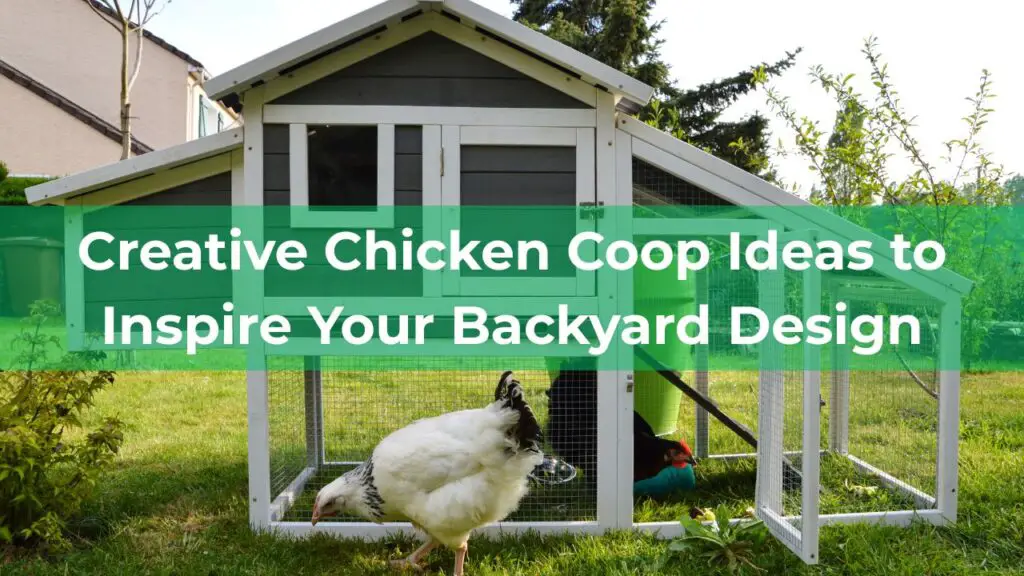Looking to spruce up your outdoor space? Garden beds can be a fantastic way to add personality and a splash of color to your yard. Whether you’re into vegetable gardening, vibrant flowers, or a mix of both, there are plenty of creative ideas to inspire your next project. Let’s dig into some fun and functional garden bed concepts that can transform your green space!
Vertical Garden Beds for Small Spaces
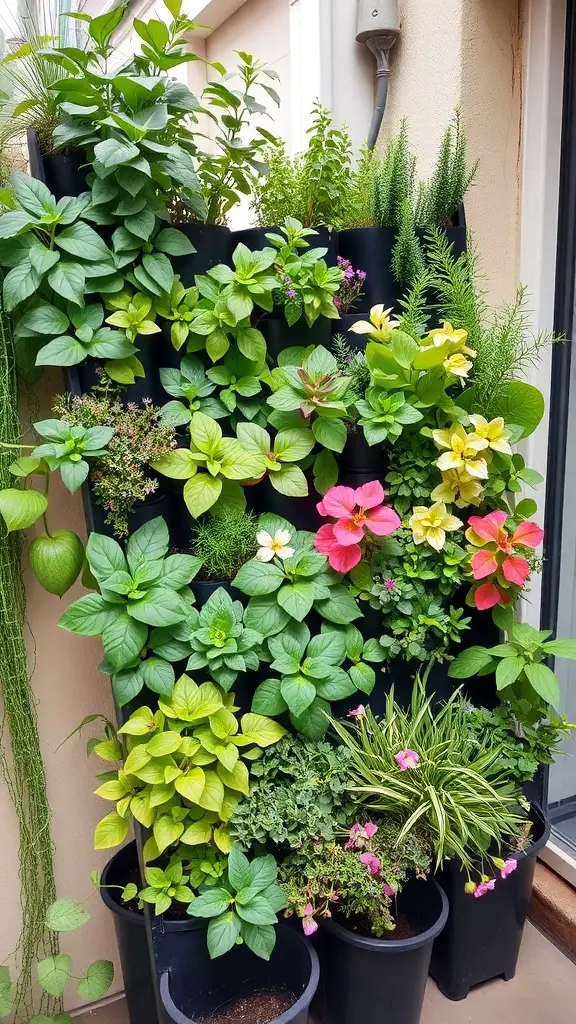
Vertical garden beds are a fantastic solution for small spaces. They allow you to grow a variety of plants without taking up much ground area. This image shows a vibrant vertical garden filled with lush greenery and colorful flowers. The design is both functional and visually appealing.
Using vertical space can transform a small balcony or patio into a green oasis. The arrangement in the image showcases different plants, from herbs to flowers, all thriving in their designated pockets. This setup not only maximizes space but also adds a splash of color and life to any area.
Creating a vertical garden is simple. You can use wall-mounted planters, repurposed pallets, or even hanging pots. The key is to choose plants that thrive in your climate and fit well together. With a little creativity, you can turn any small area into a beautiful garden.
Edible Flower Garden Beds
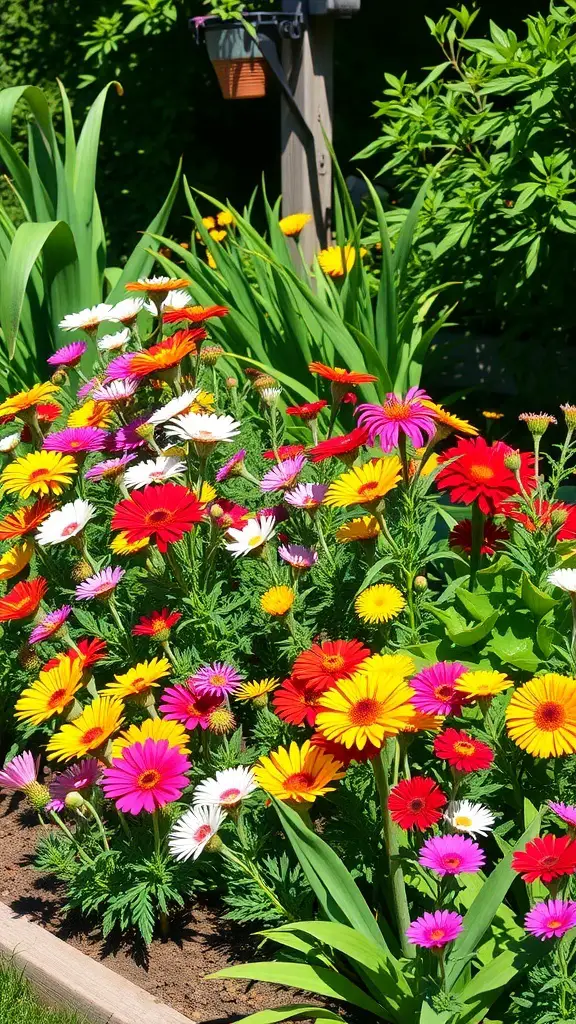
Creating an edible flower garden bed can be a delightful addition to your outdoor space. The vibrant colors and unique shapes of flowers not only beautify your garden but also offer tasty treats. Imagine stepping outside and picking fresh blooms to add to your salads or desserts.
In the image, you can see a lively mix of flowers, showcasing shades of red, pink, yellow, and white. These flowers are not just pretty; many are edible and can enhance your dishes with flavor and color. Flowers like nasturtiums, pansies, and marigolds are popular choices for edible gardens.
When planning your garden bed, think about the layout. Grouping flowers by color or height can create a stunning visual effect. Ensure that you choose flowers that thrive in your climate and soil type. This will help your garden flourish and provide a bountiful harvest.
Don’t forget to check which flowers are safe to eat. Some flowers can be toxic, so it’s best to do a little research before adding them to your meals. With the right choices, your edible flower garden can be both a feast for the eyes and the palate!
Container Garden Bed Ideas
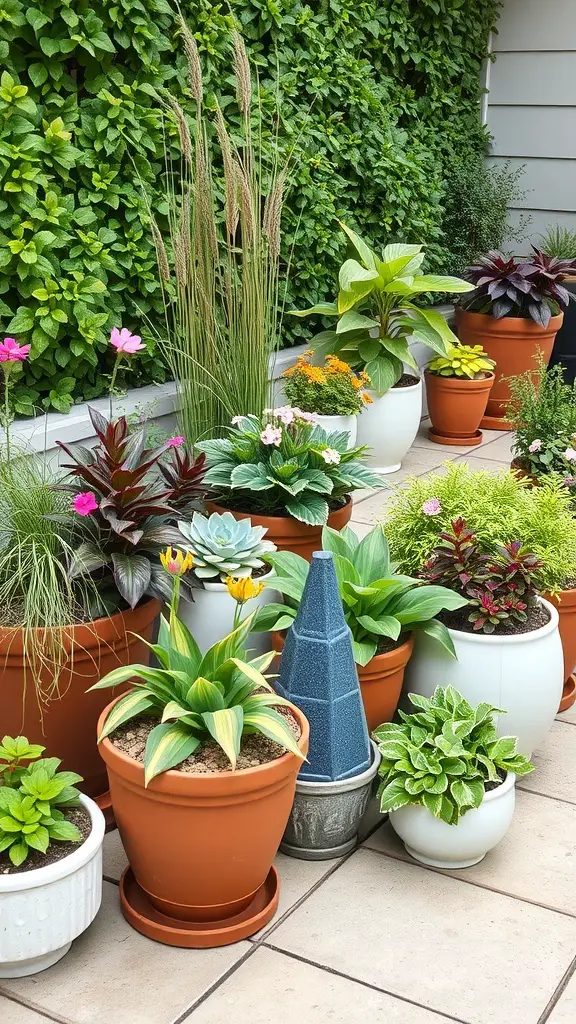
Container gardening is a fantastic way to bring life to any space, big or small. The image shows a vibrant collection of pots filled with various plants, showcasing how diverse and beautiful container gardens can be.
Each pot has its own unique style and color, creating a lively atmosphere. From tall grasses to colorful flowers, the mix of textures and heights adds visual interest. This setup is perfect for patios, balconies, or even small yards.
Using containers allows you to customize your garden easily. You can choose pots that match your home’s style or pick bright colors to make a statement. Plus, it’s simple to rearrange them whenever you want a fresh look.
Don’t forget about the plants! Consider mixing flowers with leafy greens or succulents for a varied display. Herbs are also a great option, providing both beauty and utility. With container gardening, the possibilities are endless!
Raised Wooden Garden Beds

Raised wooden garden beds are a fantastic way to grow flowers and vegetables. They offer a neat and organized look to your garden space. The image shows several wooden beds filled with vibrant flowers, creating a cheerful atmosphere.
These beds are easy to maintain and can help improve soil drainage. The height of the beds makes it simpler to tend to your plants without bending over too much. This is especially helpful for those with back issues.
Using wooden materials gives a rustic charm to your garden. You can customize the size and shape of the beds to fit your available space. Plus, they can be painted or stained to match your garden’s style.
In the image, you can see a variety of flowers blooming, showcasing how colorful and lively a raised bed can be. Mixing different types of plants not only looks great but can also attract beneficial insects.
Cinder Block Garden Beds
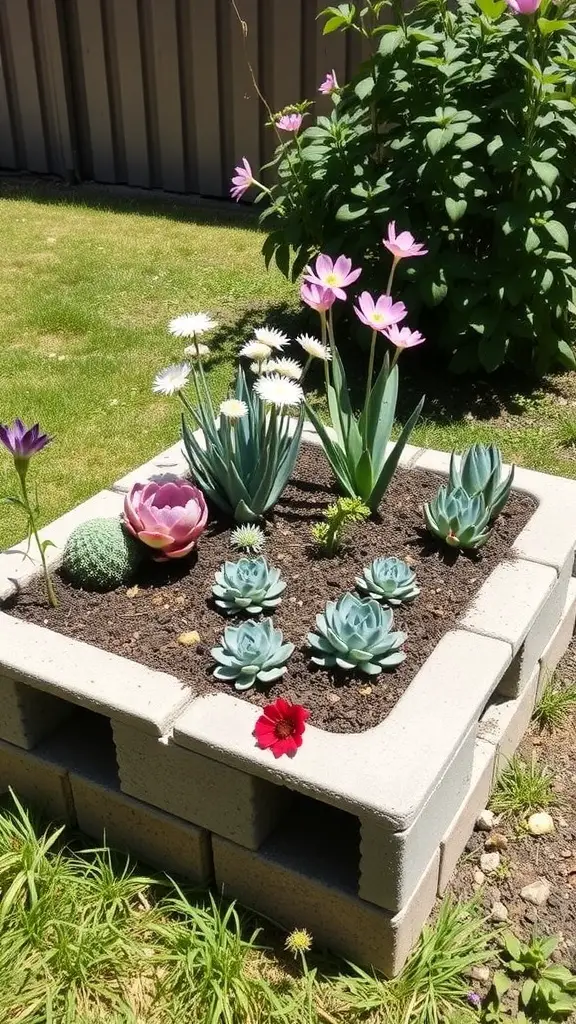
Cinder block garden beds are a fantastic way to create a unique and functional space for your plants. The image shows a vibrant garden bed made from cinder blocks, filled with colorful succulents and flowers. This design not only looks great but also provides excellent drainage for the plants.
Using cinder blocks allows for easy customization. You can arrange them in various shapes and sizes to fit your garden layout. Plus, they are sturdy and can withstand weather changes, making them a long-lasting option.
Another benefit of cinder block beds is the ability to create a raised garden. This can help keep pests away and makes it easier to tend to your plants. You can even fill the holes in the blocks with soil to grow additional plants or herbs.
Overall, cinder block garden beds are a simple yet effective way to enhance your gardening experience. They add a modern touch to your outdoor space while being practical and easy to maintain.
Herb Spiral Garden Design
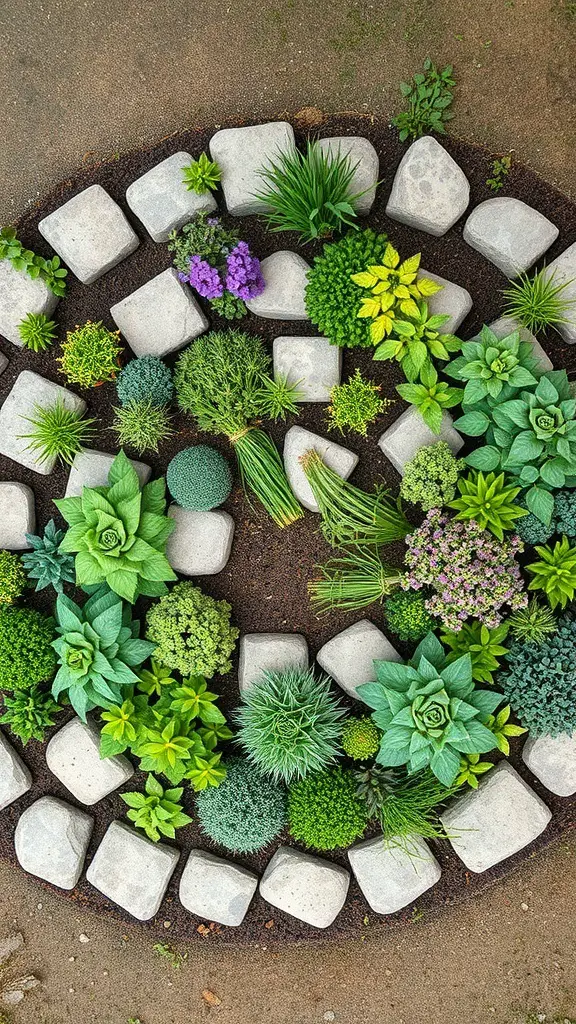
Herb spirals are a fun and efficient way to grow a variety of herbs in a compact space. This design features a spiral shape that allows for different microclimates, making it perfect for various herbs that have unique sunlight and water needs.
The image shows a beautifully arranged spiral garden made of stones and lush greenery. Each section of the spiral hosts a different type of herb, from vibrant greens to colorful flowers. This not only adds beauty but also maximizes space in your garden.
Creating a herb spiral is simple. Start by laying out stones in a spiral shape. Fill the center with rich soil and plant your herbs, ensuring to group them according to their sunlight and watering preferences. This method encourages biodiversity and can even attract beneficial insects to your garden.
Herb spirals are not just practical; they also serve as a stunning focal point in any garden. Whether you have a large yard or a small balcony, this design can fit in beautifully. Plus, having fresh herbs at your fingertips is a delightful bonus!
Wine Barrel Garden Beds
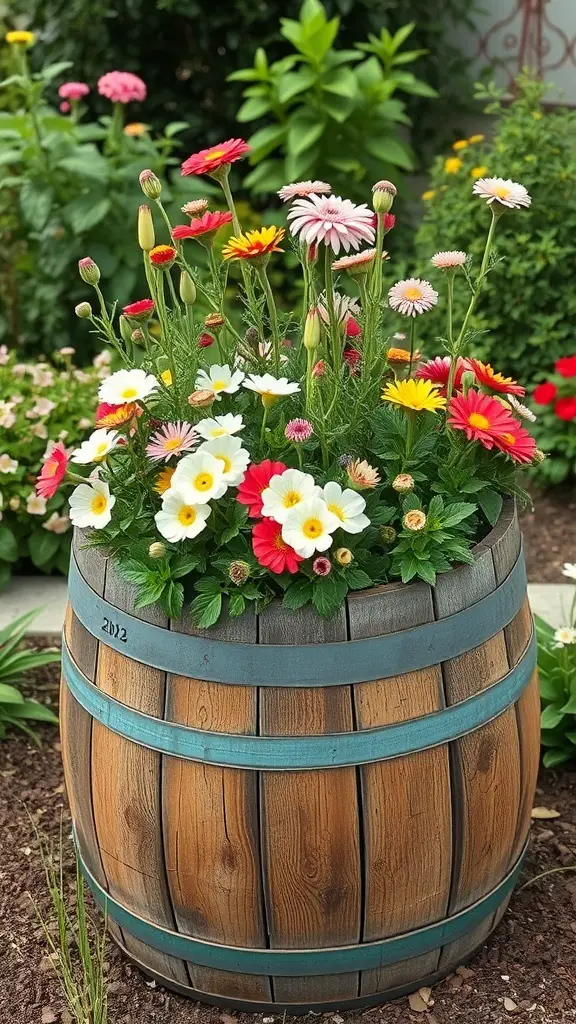
Wine barrel garden beds are a charming and practical way to grow flowers or vegetables. They add a rustic touch to any garden space. The image shows a beautifully planted wine barrel filled with colorful flowers. The vibrant blooms create a cheerful display, making the garden feel lively.
Using wine barrels for gardening is not just stylish; it’s also space-efficient. They can fit into smaller areas where traditional garden beds might not work. The circular shape allows for easy access to plants, making maintenance a breeze.
These barrels can be placed on patios, decks, or in the yard, adding character wherever they are. You can choose a variety of flowers or even herbs to plant, depending on your preference. The wooden texture of the barrel complements the greenery beautifully, creating a warm and inviting atmosphere.
Wildflower Garden Bed
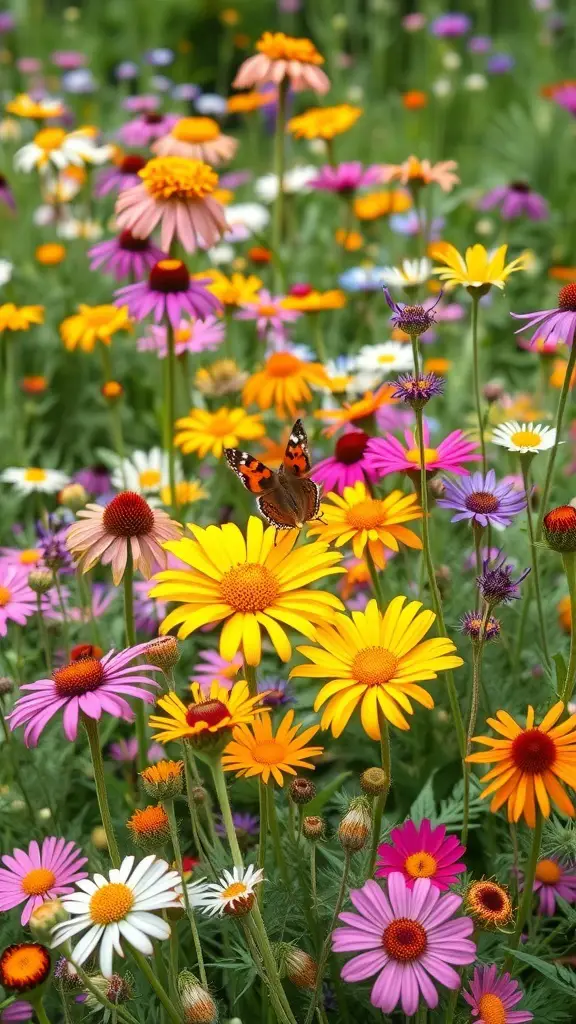
Creating a wildflower garden bed is a delightful way to bring color and life to your yard. Imagine a vibrant mix of daisies, coneflowers, and other blooms swaying in the breeze. This type of garden not only looks beautiful but also attracts butterflies and bees, making it a lively spot in your outdoor space.
In the image, you can see a stunning array of wildflowers in various shades. The bright yellows, pinks, and purples create a cheerful atmosphere. A butterfly rests on one of the flowers, showcasing the natural beauty of this garden style. Wildflowers are often low-maintenance, making them perfect for gardeners of all skill levels.
To start your own wildflower garden bed, choose a sunny spot and prepare the soil. You can either sow seeds directly or plant young plants. Water them regularly until they establish themselves. Over time, your garden will flourish, providing a lovely habitat for local wildlife.
Compost Garden Bed
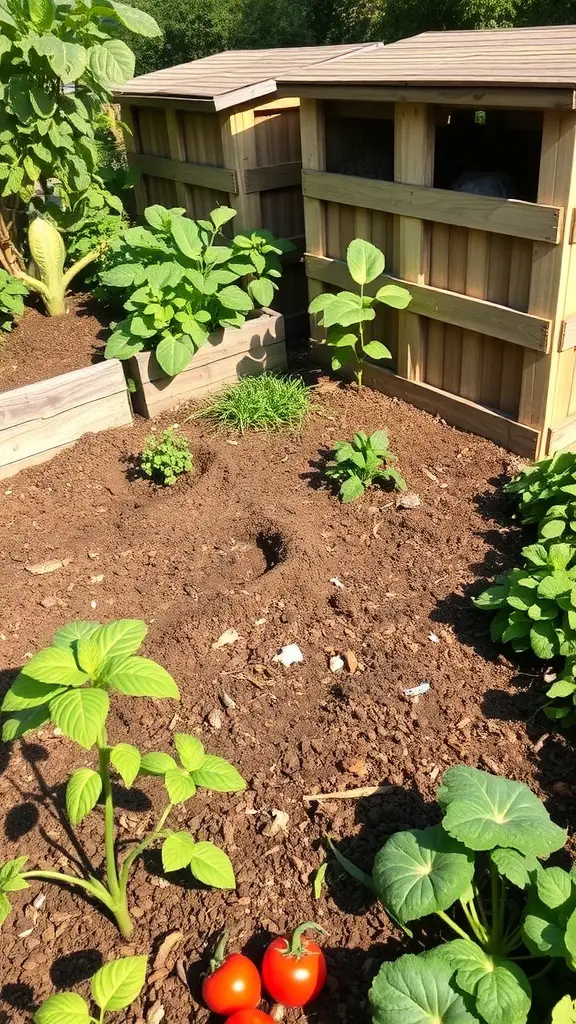
A compost garden bed is a fantastic way to grow plants while recycling kitchen scraps and yard waste. In the image, you can see a vibrant garden setup that includes a compost bin and a variety of plants. The compost bin is labeled and filled with organic material, ready to break down into nutrient-rich compost.
The surrounding plants are thriving, showcasing the benefits of using compost. You can spot tomatoes and leafy greens, all nourished by the rich soil created from composting. This method not only helps the environment but also enhances the health of your garden.
Creating a compost garden bed is simple. Start by collecting kitchen scraps like vegetable peels, coffee grounds, and eggshells. Layer these with yard waste such as leaves and grass clippings in your compost bin. Over time, this mixture will decompose, providing your plants with essential nutrients.
Using a compost garden bed is a win-win. You reduce waste while growing healthy food. Plus, it’s rewarding to see your plants flourish thanks to your efforts in composting!
Children’s Sensory Garden Bed

A children’s sensory garden bed is a delightful way to engage young minds and hands. This image showcases a vibrant and playful setup, perfect for little explorers. The garden features colorful faux plants and fun decorations, creating a visually stimulating environment.
Bright flowers and quirky items like a basketball and a cute elephant shape invite kids to touch and interact. The use of different textures, from smooth stones to soft faux plants, encourages sensory play. This setup not only looks inviting but also promotes curiosity and creativity.
Parents can easily create a similar space by incorporating various elements that appeal to the senses. Consider adding fragrant herbs, colorful stones, or even small toys. The goal is to make the garden a fun and engaging place for children to learn and explore.
Pollinator-Friendly Garden Beds

Creating a pollinator-friendly garden bed is a fantastic way to support local wildlife while adding beauty to your outdoor space. The image shows a vibrant array of flowers, buzzing with bees, which are essential pollinators. These colorful blooms not only attract bees but also butterflies and other beneficial insects.
To design your own pollinator-friendly garden bed, start by choosing a variety of native flowers. Plants like coneflowers, daisies, and lavender are great choices. They provide nectar and pollen, which are vital for pollinators. Mixing different heights and colors will create a lively and inviting atmosphere.
Consider planting in clusters rather than single plants. This makes it easier for pollinators to find food. Also, avoid using pesticides, as they can harm these helpful creatures. Instead, opt for natural pest control methods to keep your garden thriving.
Incorporating a water source, such as a shallow dish with pebbles, can also help attract more pollinators. Just remember to keep it clean and fresh. With a little effort, your garden bed can become a haven for pollinators, contributing to a healthier ecosystem.
Succulent Garden Bed
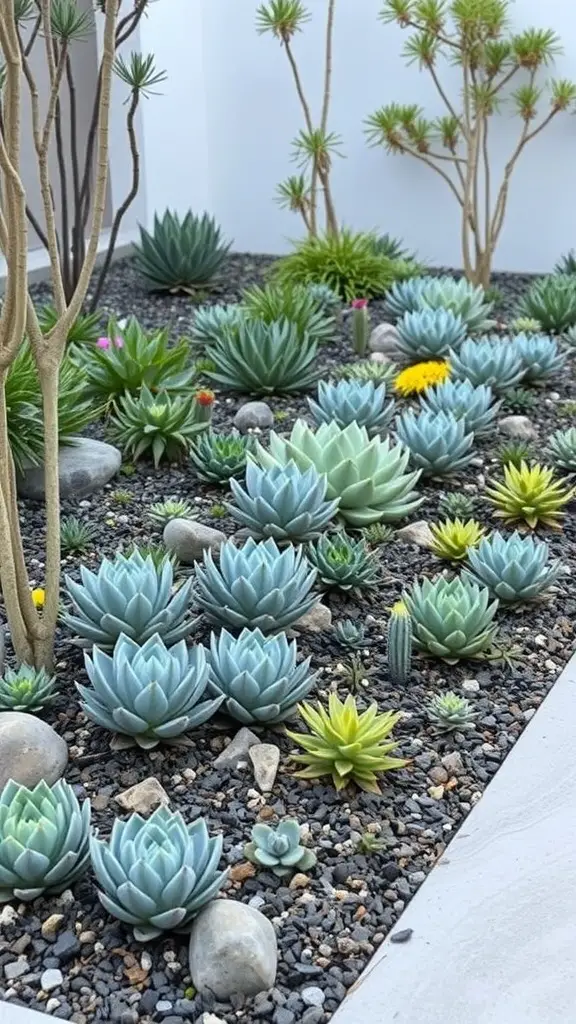
Creating a succulent garden bed is a fantastic way to add a touch of greenery to your outdoor space. Succulents are low-maintenance plants that thrive in various conditions, making them perfect for busy gardeners.
The image showcases a beautiful arrangement of various succulent types, each with unique shapes and colors. The soft blues and greens of the succulents contrast nicely with the dark gravel, creating a visually appealing landscape. A few pops of yellow flowers add a cheerful touch to the scene.
When planning your succulent garden bed, consider the layout. Grouping similar plants together can create a cohesive look. Mixing in rocks and pebbles not only enhances the design but also helps with drainage, which is essential for succulents.
Don’t forget to choose a sunny spot! Succulents love sunlight, so place your garden bed where they can soak up those rays. With a little creativity and care, your succulent garden bed can become a stunning focal point in your yard.
Shade Garden Bed

Creating a shade garden bed can be a delightful way to enhance your outdoor space. The image shows a lush arrangement of ferns and greenery, thriving under the protective canopy of trees. This setup not only looks inviting but also provides a cool retreat during hot summer days.
When planning your shade garden, consider the types of plants that flourish in low-light conditions. Ferns, like those in the image, are excellent choices. They add texture and depth, making your garden feel vibrant and alive. Other great options include hostas, astilbes, and bleeding hearts.
Incorporating various shades of green can create a calming atmosphere. The contrasting textures of the ferns against the smooth leaves of other plants can make your garden visually interesting. Don’t forget to add some mulch to retain moisture and suppress weeds, which helps your plants thrive.
Finally, think about pathways or seating areas. A simple stone path can lead you through your shade garden, allowing you to enjoy the beauty up close. With a little planning, your shade garden bed can become a peaceful oasis in your yard.
Rock Garden Bed Ideas
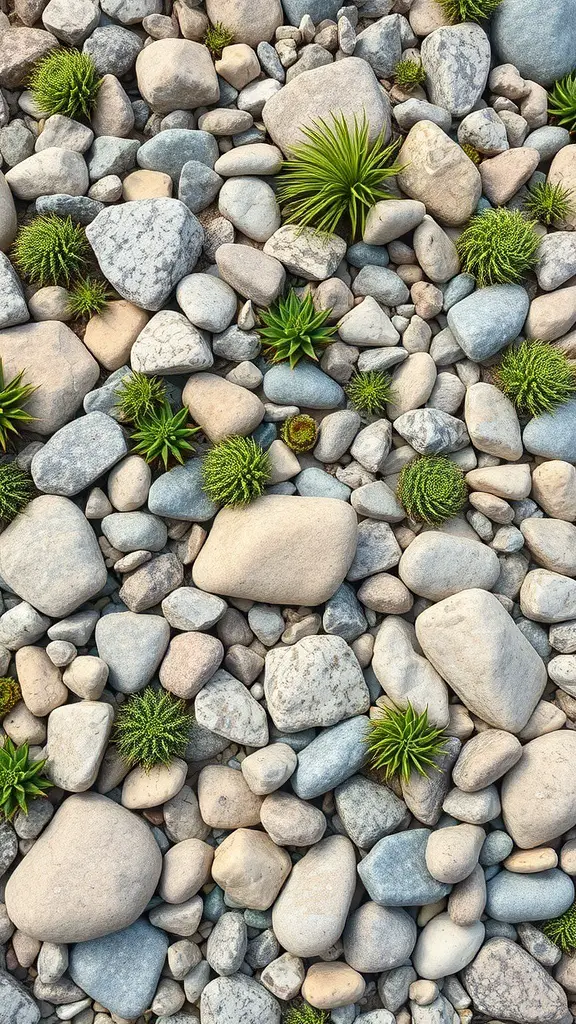
Rock gardens are a fantastic way to add texture and interest to your outdoor space. The image showcases a beautiful arrangement of various stones and vibrant green plants. This combination creates a natural look that feels both calming and inviting.
Using different sizes and colors of rocks can enhance the visual appeal. Larger stones can serve as focal points, while smaller pebbles fill in the gaps. The greenery peeking through the rocks adds life and color, making the garden feel more dynamic.
Consider incorporating drought-resistant plants like succulents or ornamental grasses. They thrive in rocky environments and require less water. This makes rock gardens not only beautiful but also low-maintenance.
When planning your rock garden, think about the layout. A winding path of stones can lead the eye through the space, creating a sense of flow. You can also mix in some decorative elements like driftwood or garden sculptures for added charm.
Trellis Garden Bed for Climbing Plants
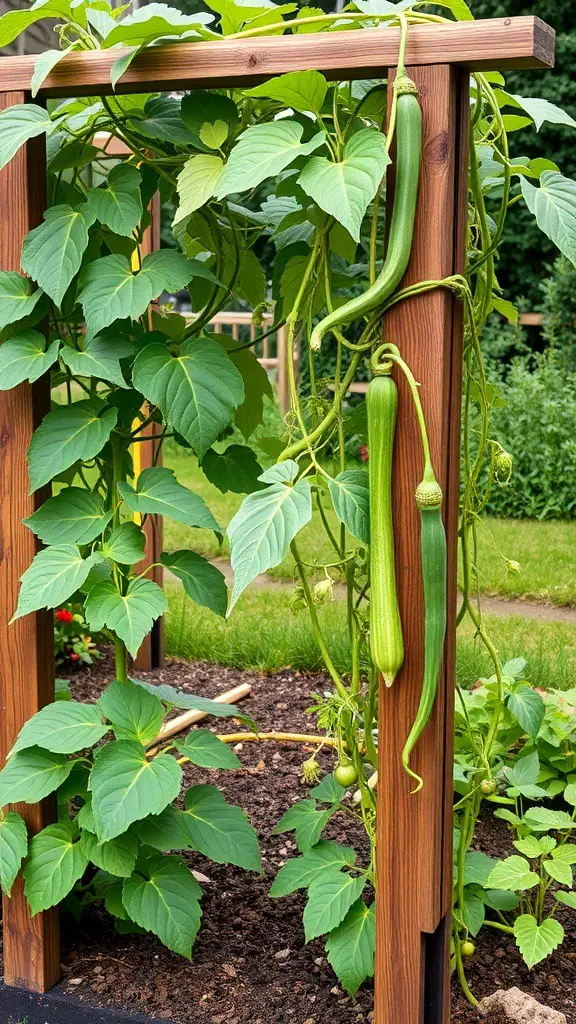
A trellis garden bed is a fantastic way to grow climbing plants. The structure not only supports the plants but also adds a charming visual element to your garden. In the image, you can see a wooden trellis with vibrant green vines climbing up. These plants are likely to produce delicious vegetables or beautiful flowers.
Using a trellis allows you to maximize your garden space. Instead of spreading out horizontally, plants can grow vertically. This is especially useful if you have limited space. The trellis can be made from various materials, but wood is a popular choice for its durability and natural look.
Climbing plants like cucumbers, beans, and peas thrive on a trellis. They can wrap around the structure, which helps keep the fruits off the ground. This not only improves air circulation but also reduces the risk of pests and diseases.
When planning your trellis garden bed, consider the amount of sunlight and water your plants will need. Position the trellis where it can receive plenty of light, and ensure the soil is well-drained. With a little care, your climbing plants will flourish, providing you with a bountiful harvest.

